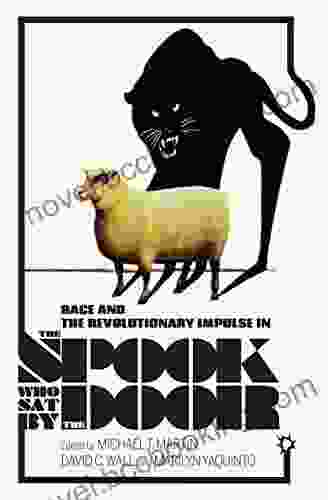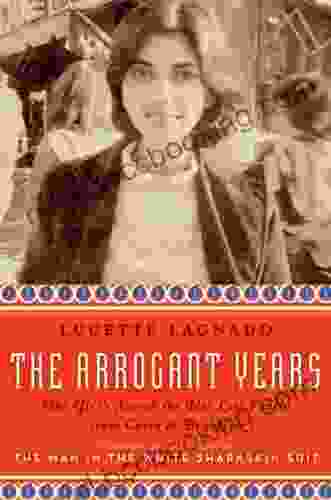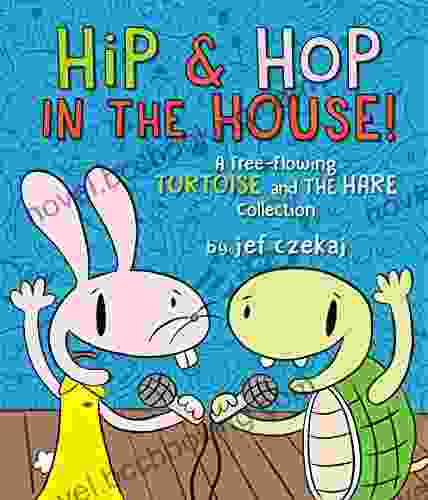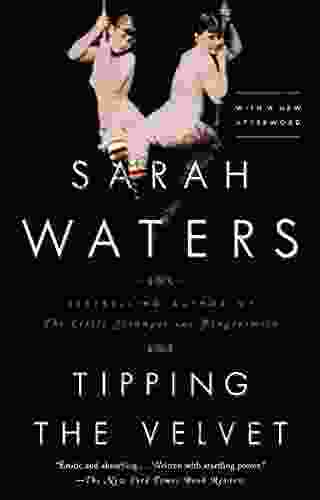Race and the Revolutionary Impulse in "The Spook Who Sat By the Door": A Critical Examination

Sam Greenlee's groundbreaking novel, "The Spook Who Sat By the Door," is a scathing indictment of the Black Power movement and its failure to address the root causes of racial inequality in America. Through the character of Dan Freeman, a black police officer who infiltrates the CIA and becomes a revolutionary, Greenlee exposes the limitations of the movement's tactics and proposes alternative strategies for social change.
4.2 out of 5
| Language | : | English |
| File size | : | 5835 KB |
| Text-to-Speech | : | Enabled |
| Enhanced typesetting | : | Enabled |
| Word Wise | : | Enabled |
| Print length | : | 231 pages |
| Screen Reader | : | Supported |
The Limitations of the Black Power Movement
The Black Power movement emerged in the 1960s as a response to the failures of the Civil Rights Movement to achieve meaningful change for black Americans. The movement advocated for black self-determination, economic empowerment, and armed self-defense. However, as Greenlee's novel demonstrates, the movement was often hampered by its own internal divisions and its inability to articulate a clear political agenda.
One of the most damaging divisions within the Black Power movement was the split between the nonviolent wing, led by Martin Luther King Jr., and the more militant wing, led by Malcolm X. King's philosophy of nonviolence was based on the belief that love and forgiveness could overcome racism. Malcolm X, on the other hand, argued that black Americans should use any means necessary to defend themselves against white violence.
Greenlee's novel exposes the futility of both of these approaches. Dan Freeman, the protagonist of the novel, is a nonviolent activist who believes in the power of love to change hearts and minds. However, after witnessing the brutality of the police firsthand, Freeman comes to the that nonviolence is ineffective against systemic racism.
Freeman then joins the CIA, where he learns the skills of sabotage and guerrilla warfare. He uses these skills to launch a one-man war against the white establishment, assassinating racist police officers and blowing up government buildings. However, Freeman's actions ultimately prove to be self-destructive. He is killed by the police, and his death serves as a reminder of the dangers of resorting to violence.
Alternative Strategies for Social Change
Greenlee's novel does not offer any easy solutions to the problem of racial inequality. However, it does suggest that there are more effective strategies for social change than violence or nonviolence alone. One of the most important strategies is education.
Freeman's journey in the novel is one of self-education. He learns about the history of racism in America, the workings of the CIA, and the techniques of guerrilla warfare. This knowledge empowers him to take action against the white establishment. However, Freeman's education is not limited to books and speeches. He also learns from his own experiences, both positive and negative.
Education is not the only strategy for social change that Greenlee's novel suggests. The novel also emphasizes the importance of community building and solidarity. Freeman's relationship with his wife, Connie, is a source of strength and support for him. Connie is a strong and independent woman who believes in Freeman's mission. She provides him with emotional support and helps him to stay grounded.
The novel also highlights the importance of international solidarity. Freeman's travels to Africa and Cuba expose him to different perspectives on race and revolution. He learns from the experiences of other black people around the world, and he realizes that the struggle for racial justice is a global one.
"The Spook Who Sat By the Door" is a complex and challenging novel that offers no easy answers to the problem of racial inequality. However, the novel does provide a valuable critique of the Black Power movement and suggests alternative strategies for social change. Greenlee's novel is a must-read for anyone who is interested in the history of the civil rights movement, the ongoing struggle for racial justice, and the power of education and solidarity.
4.2 out of 5
| Language | : | English |
| File size | : | 5835 KB |
| Text-to-Speech | : | Enabled |
| Enhanced typesetting | : | Enabled |
| Word Wise | : | Enabled |
| Print length | : | 231 pages |
| Screen Reader | : | Supported |
Do you want to contribute by writing guest posts on this blog?
Please contact us and send us a resume of previous articles that you have written.
 Book
Book Novel
Novel Page
Page Chapter
Chapter Text
Text Story
Story Genre
Genre Reader
Reader Library
Library Paperback
Paperback E-book
E-book Magazine
Magazine Newspaper
Newspaper Paragraph
Paragraph Sentence
Sentence Bookmark
Bookmark Shelf
Shelf Glossary
Glossary Bibliography
Bibliography Foreword
Foreword Preface
Preface Synopsis
Synopsis Annotation
Annotation Footnote
Footnote Manuscript
Manuscript Scroll
Scroll Codex
Codex Tome
Tome Bestseller
Bestseller Classics
Classics Library card
Library card Narrative
Narrative Biography
Biography Autobiography
Autobiography Memoir
Memoir Reference
Reference Encyclopedia
Encyclopedia Samantha Perkins
Samantha Perkins Kazuo Koike
Kazuo Koike Leo Steinberg
Leo Steinberg Sherri Rifkin
Sherri Rifkin Sam Horn
Sam Horn Randy Ribay
Randy Ribay Robert Knott
Robert Knott Rajat Gupta
Rajat Gupta Robert R Reilly
Robert R Reilly Rob Neyer
Rob Neyer Robin Hemley
Robin Hemley Rebecca Goldstein
Rebecca Goldstein Ron Franscell
Ron Franscell Shahida Arabi Ma
Shahida Arabi Ma Sarah Fragoso
Sarah Fragoso Robert Louis Stevenson
Robert Louis Stevenson Raymond Bial
Raymond Bial Robin Wright
Robin Wright Sean Ennis
Sean Ennis Rory Carruthers
Rory Carruthers
Light bulbAdvertise smarter! Our strategic ad space ensures maximum exposure. Reserve your spot today!

 Jonathan FranzenThe Ultimate Guide to Surviving the Outdoors: A Review of Randy Gerke's...
Jonathan FranzenThe Ultimate Guide to Surviving the Outdoors: A Review of Randy Gerke's... Charlie ScottFollow ·17.2k
Charlie ScottFollow ·17.2k Justin BellFollow ·6.2k
Justin BellFollow ·6.2k Allen ParkerFollow ·14.7k
Allen ParkerFollow ·14.7k Jackson HayesFollow ·8.8k
Jackson HayesFollow ·8.8k Howard PowellFollow ·4.3k
Howard PowellFollow ·4.3k Russell MitchellFollow ·2.2k
Russell MitchellFollow ·2.2k Orson Scott CardFollow ·16.7k
Orson Scott CardFollow ·16.7k Joe SimmonsFollow ·6.5k
Joe SimmonsFollow ·6.5k

 Steven Hayes
Steven HayesEmbark on Unforgettable Adventures: Discover the Best of...
Unveiling the Enchanting Trails of the...
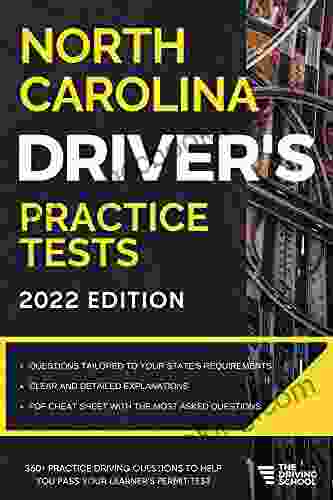
 Jarrett Blair
Jarrett BlairMaster the Road: Ace Your North Carolina Driver's Test...
Unlock the Secrets to...
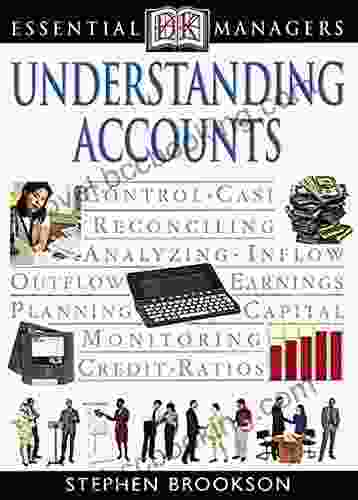
 Brent Foster
Brent FosterDk Essential Managers Understanding Accounts: Your...
In today's...

 Isaac Mitchell
Isaac MitchellPrognosis: A Memoir of My Brain - A Journey of Hope and...
In 2013, Eve Ensler was diagnosed with a...
4.2 out of 5
| Language | : | English |
| File size | : | 5835 KB |
| Text-to-Speech | : | Enabled |
| Enhanced typesetting | : | Enabled |
| Word Wise | : | Enabled |
| Print length | : | 231 pages |
| Screen Reader | : | Supported |


